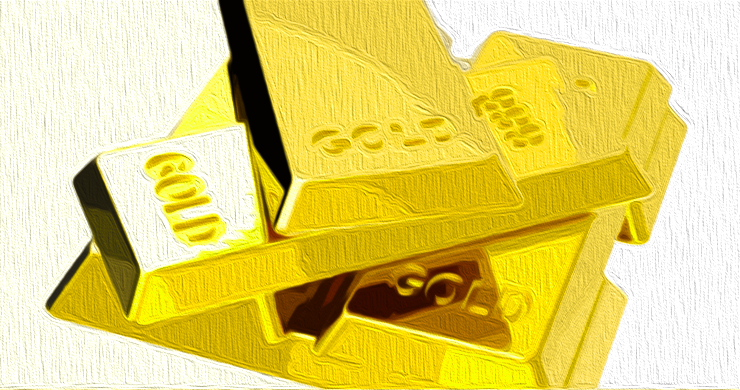
Introduction
Bitcoin, with a market capitalization of $798 billion and a 24-hour trade volume of $16.58 billion, is currently consolidating just above the $41K zone. In this article, we will conduct a meticulous analysis of bitcoin's technical indicators across different timeframes to determine its current market trend.
Bitcoin Technical Indicators
Oscillators and Momentum Indicators
The relative strength index (RSI) at 40 suggests a neutral to bearish stance in bitcoin's momentum. Additionally, the Stochastic at 12 and commodity channel index (CCI) at -120 show a balancing act. However, the momentum indicator points to positivity at -2054, contrasting with the moving average convergence/divergence (MACD) level at -484, which indicates a bearish outlook.
Moving Averages
The moving averages (MAs) provide insights into bitcoin's market sentiment. Both the exponential moving average (EMA) and simple moving average (SMA) across various timeframes, from 10 to 50 days, predominantly signal negative sentiment, reflecting a downward trend. However, the longer-term EMAs and SMAs, specifically at 100 and 200 days, show bullish signals, suggesting potential long-term upside amidst short-term volatility.
Analysis of Different Timeframes
4-Hour Chart
The 4-hour chart reveals a recent bearish trend, highlighted by a significant drop and subsequent consolidation. This period of less volatility and consolidation could indicate market uncertainty. Traders should consider waiting for a bullish reversal or a breakout above resistance levels as potential entry points, while exit points should focus on protecting against further downside movement.
Daily Chart
On the daily chart, bitcoin exhibits a more extended bearish phase with consistent drops and increasing volume on these bearish signals, confirming the strength of the downtrend. Entry points for long positions could be identified through bullish patterns at key support levels or candle closures above previous highs. Exit strategies might focus on minimizing losses if the price breaks below support levels.
1-Hour Chart
The 1-hour chart offers a more granular view of bitcoin's price movements, showing a clearer consolidation pattern post-downtrend. Entry points for long positions could be identified through breakouts or bullish patterns at support levels. Exit strategies should focus on minimizing losses if the price breaks below recent lows, especially with signs of significant volume.
Conclusion
Overall, bitcoin's technical analysis indicates a bearish phase in the market. Traders should exercise caution in long positions and pay attention to reversal signals. Volume remains a critical indicator, and spikes in conjunction with price movements are essential to confirm trend strength. While the market currently presents bearish signals, there are underlying strengths that could fuel a potential bullish reversal. Long-term moving averages and potential reversal patterns on the daily chart suggest resilience. However, unless there is a significant change in market dynamics or external factors, bitcoin is likely to face further downward pressure in the short to medium term.
What are your thoughts on bitcoin's market action? Share your opinions in the comments section below. Don't forget to register your email for weekly price analysis updates.
Frequently Asked Questions
Can I have physical possession of gold within my IRA?
Many people wonder if they are allowed to possess physical gold within an IRA account. This is a fair question because there isn't any legal way to do it.
You can still own gold in an IRA if you look at the law.
Most people don’t realize just how much they could save by putting your gold in an IRA, rather than keeping it at home.
It is easy to toss gold coins, but it's not easy to place them in an IRA. If you decide to keep your precious metal in your own home you will have to pay two taxes. The IRS will collect once and the state where your residence is located will collect the other.
It is possible to lose your gold and pay twice as much tax. So why would you choose to keep it in your home?
You may argue that it is necessary to have the assurance that your gold safe in your home. To protect yourself from theft, store your gold somewhere that is more secure.
You shouldn't even leave your gold in your home unless you plan to visit often. If you leave your precious gold unattended thieves will easily steal it.
A better option is to store your gold in an insured vault. This will ensure that your gold is protected against fire, flood, earthquake and robbery.
You won't be responsible for paying any property tax if you store your gold in a vault. Instead, you will have to pay income tax for any gains you make selling your gold.
A IRA can be a great option if you want to avoid paying tax on your gold. An IRA will allow you to avoid income tax while earning interest on your gold.
Capital gains tax is not required on gold. If you decide to cash it out, you will have full access to its value.
And because IRAs fall under federal regulation, you won’t have any problems getting your gold transferred to another institution if you move.
Bottom line: You can have gold in an IRA. Fear of losing it is the only thing that will hold you back.
What is the interest rate on a gold IRA?
It all depends on how much you invest in it. If you have $100,000 then yes. You will not be able to answer if your income is less than $100,000
How much money you place in an IRA will determine how it earns interest.
If you are putting in more than $100,000 annually for retirement savings, you should open a regular brokerage account.
There you will earn more interest, but also be exposed to higher risk investments. If the stock market crashes you don't wish to lose your entire investment.
However, if you only put in $100,000 per annum, you'll probably be better off with an IRA. At least until the market starts growing again.
What precious metals do you have that you can invest in for your retirement?
First, you need to understand what you have and where you are spending your money. Start by listing everything you have. You should list all savings accounts, stocks and bonds, mutual funds certificates of deposit (CDs), annuities, life insurance policies, annuities 401(k), real estate investments, and any other assets like precious metals. To determine how much money is available to invest, add all these items.
If you haven't already done so, you may want to consider opening a Roth IRA account if you're younger than 59 1/2 years old. Traditional IRAs allow you to deduct contributions out of your taxable income. Roth IRAs don't. However, you won't be able to take tax deductions for future earnings.
If you decide to invest more, you will most likely need to open a second investment account. Start with a regular brokerage.
Statistics
- If you accidentally make an improper transaction, the IRS will disallow it and count it as a withdrawal so that you would owe income tax on the item's value and, if you are younger than 59 ½, an additional 10% early withdrawal penalty. (forbes.com)
- SEP-IRA”Simplified employee pension” For self-employed people like independent contractors, freelancers, and small-business ownersSame tax rules as traditional IRASEP IRA contributions in 2022 are limited to 25% of compensation or $66,000, whichever is less4. (sltrib.com)
- The maximum yearly contribution to an individual's IRAs is currently $6,000 ($7,000 for those 50 years or older), or 100% of earned income, whichever is less. (monex.com)
- Silver must be 99.9% pure • (forbes.com)
External Links
takemetothesite.com
en.wikipedia.org
kitco.com
regalassets.com
How To
How to turn your IRA into a IRA with gold content
You want to convert your retirement savings from a traditional IRA to a gold IRA. Well, this article will help you do just that. Here are the steps to help you make the change.
“Rolling Over” refers to the process of transferring money between two types of IRAs (traditional and gold). This is done because tax advantages go along with rolling over an account. In addition, some people prefer investing in physical assets like precious metals.
There are two types IRAs – Traditional IRAs and Roth IRAs. The difference is simple. Traditional IRAs allow investors the ability to deduct taxes whenever they withdraw their earnings. Roth IRAs are not. If you invest $5,000 in a Traditional IRA now, then you'll be able only to withdraw $4,000. The Roth IRA would allow you to keep every cent if you invested the same amount.
If you are looking to convert your traditional IRA into a gold IRA, here's what to know.
First, decide whether to transfer funds from an old account to your new account or to rollover your current balance. If you transfer money, income tax will apply to any earnings exceeding $10,000. But if you choose to roll over your IRA, you won't be taxed on those earnings until you reach age 59 1/2.
Once you have decided to open a new bank account, You will likely need to show proof of identity, such as a passport, Social Security card, or birth certificate. You will then need to fill out paperwork proving that you have an IRA. Once you've filled out the forms you'll send them to your bank. They will verify your identity as well as give instructions on how to send wire transfers and checks.
This is the fun part. You'll deposit cash into your new account and wait for the IRS to approve your requests. After approval, you'll receive a letter stating that funds can be withdrawn.
That's it! You can now relax and watch your money grow. Keep in mind that if your mind changes about converting your IRA to another type, you can simply close it and transfer any remaining balance to a new IRA.
—————————————————————————————————————————————————————————————-
Based on [POSTTITLE]
by [POSTAUTHOR]
Related posts:
 Ethereum Faces Bearish Pressure and Upper Resistance: A Technical Analysis
Ethereum Faces Bearish Pressure and Upper Resistance: A Technical Analysis
 Ethereum Market Analysis: Bearish Trends and Potential for a Bullish Reversal
Ethereum Market Analysis: Bearish Trends and Potential for a Bullish Reversal
 Bitcoin Technical Analysis: BTC Balances Above $42,000 Amidst Downtrend Signals
Bitcoin Technical Analysis: BTC Balances Above $42,000 Amidst Downtrend Signals
 Ethereum Technical Analysis: ETH Hangs Above $2K Range Amid 3% Drop
Ethereum Technical Analysis: ETH Hangs Above $2K Range Amid 3% Drop












